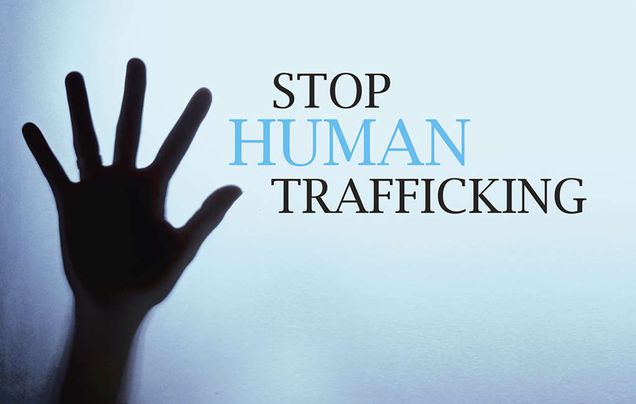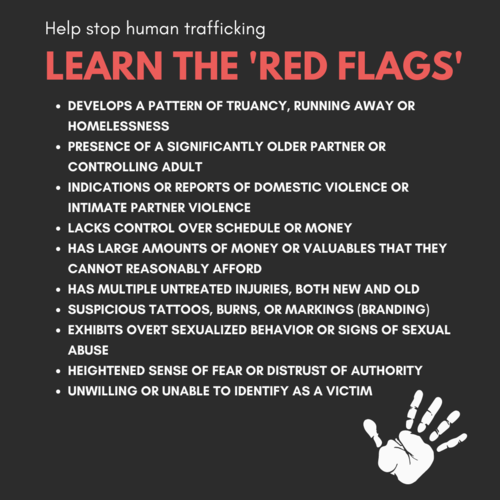Stop Human Trafficking

Human trafficking is a significant global human rights issue, and sadly since human trafficking is covert, and since reporting is inconsistent, accurate data is scarce. People who are victims of human trafficking can be of any race, gender, sexual orientation, ethnicity, or nationality. Trafficking occurs to adults and minors across American communities, whether in the suburbs, rural areas, or urban areas. Various reasons may contribute to the victimization of these individuals, such as homelessness, runaway status, abuse, neglect, and a lack of safety at home due to violence. Millions of people across the globe are trafficked every year – including here in the United States (Department of Homeland Security, 2022).
In the meantime, human trafficking is something that everyone is capable of discovering. There are many red flags and indicator signs that can help identify a human trafficking situation, such as; signs of physical abuse, poor living conditions, is the person fearful, timid, or submissive, does the individual appears to be coached on what to say, or does that person have freedom of movement (Department of Homeland Security, 2022). In light of this, there are numerous ways to support these victims of human trafficking once you have noticed these red flags and indicators. For instance, initiating a conversation in private, providing support and empowerment, listening to their comments and concerns, supporting their decisions, offering to help, and finally, if you believe that you have identified someone in the trafficking situation, alert law enforcement immediately (Supporting Victims of Human Trafficking-Valley Crisis Center, 2022). The National Human Trafficking Hotline is 1-888-373-7888, a 24-hour, toll-free, multilingual anti-trafficking hotline.

Nevertheless, there are simple ways to get involved and make a real difference: raise awareness of the issue on a local, regional, and national level, fundraise for anti-trafficking organizations, volunteer for anti-trafficking organizations, and promote anti-trafficking legislation (Public Service Degrees, 2020). The trauma suffered by survivors of human trafficking can often last a lifetime, both psychologically and physically. All anti-trafficking efforts should incorporate trauma-informed efforts to support survivors effectively, including the criminal justice system and victim services. When deploying prevention strategies and engaging with survivors, trauma-informed coping strategies and media reporting should also include a trauma-informed approach—getting trauma-informed means responding to the impacts of trauma on a person’s life on a strengths-based approach. Human trafficking victims should be treated to minimize the likelihood of re-traumatizing them by recognizing signs of trauma and designing all interactions with them accordingly. To address survivors’ unique experiences and needs, this solution focuses on creating a sense of physical, psychological, and emotional safety and well-being (US Department of State, 2021).
Sources:
Department of Homeland Security. (2022, April 13). What Is Human Trafficking? | Homeland Security. DHS. Retrieved May 3, 2022, from https://www.dhs.gov/blue-campaign/what-human-trafficking
Supporting Victims of Human Trafficking – Valley Crisis Center. (2022). Valley Crisis Center. Retrieved May 3, 2022, from https://www.valleycrisiscenter.org/supporting-victims-of-human-trafficking/
US Department of State. (2021, January 10). Identify and Assist a Trafficking Victim. United States Department of State. Retrieved May 3, 2022, from https://www.state.gov/identify-and-assist-a-trafficking-victim/
Public Service Degrees. (2020, August 14). Be the Change: How You Can Help End Human Trafficking. Retrieved May 3, 2022, from https://www.publicservicedegrees.org/403.shtml/